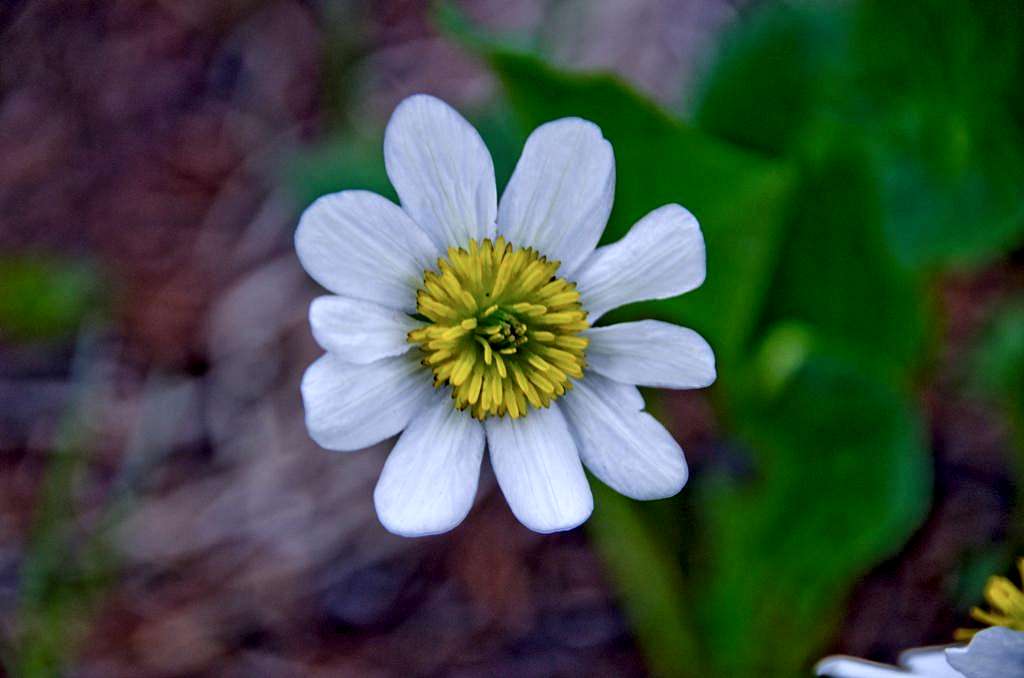
White Marsh Marigold (Caltha leptosepala)
Herman Gulch (June 2012)
One of the earliest harbingers of spring in the Rocky Mountain west is the bright and lovely white marsh marigold. Blooming along the edges of subalpine wetlands and meadows soon after snowmelt, abundant flower displays can often be enjoyed in early May to July. Its large white flowers and glossy heart-shaped basal leaves can easily identify this member of the Buttercup family. Plants are about 5 to 10 centimeters tall with flowers on solitary stalks of 3 to 10 cm. The flowers have no real petals but many white sepals that look like petals. Masses of yellow stamens brighten the flower center.
"Caltha" is derived from the Greek word kalathos, "a goblet," a reference to the flower shape. This plant is not a true marigold (which is actually a member of the daisy family), but a marsh-loving buttercup relative. The species name "leptosepala" means slender sepals.
The young leaves are purported to make an excellent potherb by some references, however other authorities warn against eating any part of this species and its Eastern sister species, Caltha palustris, which has been reported to cause toxicity and livestock losses.
Caltha leptosepala is widely distributed in mountainous areas from Alaska south through the Rocky Mountains to Colorado, Utah, and Arizona. It is found westward to northeastern Nevada and southeastern Oregon.
